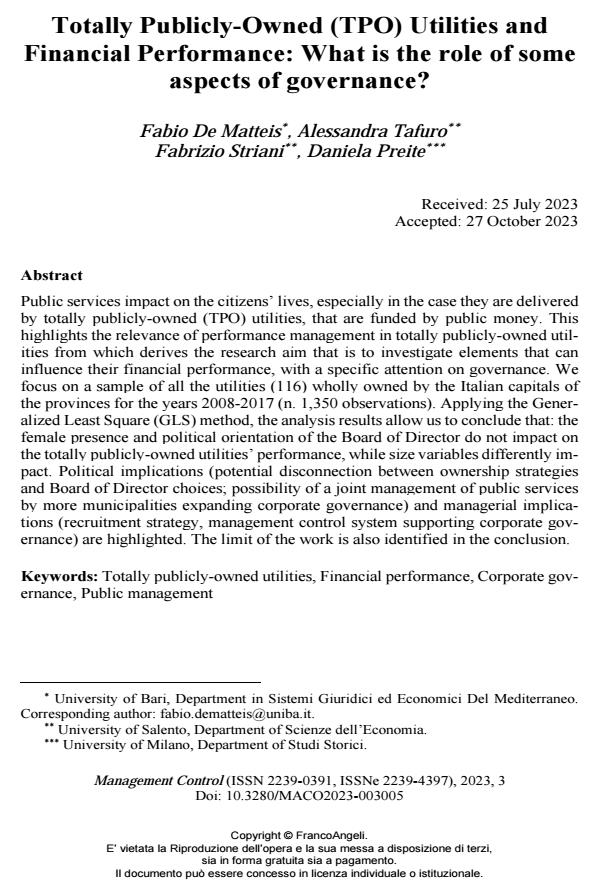Totally Publicly-Owned (TPO) Utilities and Financial Performance: What is the role of some aspects of governance?
Journal title MANAGEMENT CONTROL
Author/s Fabio De Matteis, Alessandra Tafuro, Fabrizio Striani, Daniela Preite
Publishing Year 2024 Issue 2023/3
Language English Pages 23 P. 89-111 File size 323 KB
DOI 10.3280/MACO2023-003005
DOI is like a bar code for intellectual property: to have more infomation
click here
Below, you can see the article first page
If you want to buy this article in PDF format, you can do it, following the instructions to buy download credits

FrancoAngeli is member of Publishers International Linking Association, Inc (PILA), a not-for-profit association which run the CrossRef service enabling links to and from online scholarly content.
Public services impact on the citizens’ lives, especially in the case they are deliv-ered by totally publicly-owned (TPO) utilities, that are funded by public money. This highlights the relevance of performance management in totally publicly-owned utilities from which derives the research aim that is to investigate elements that can influence their financial performance, with a specific attention on gov-ernance. We focus on a sample of all the utilities (116) wholly owned by the Ital-ian capitals of the provinces for the years 2008-2017 (n. 1,350 observations). Ap-plying the Generalized Least Square (GLS) method, the analysis results allow us to conclude that: the female presence and political orientation of the Board of Direc-tor do not impact on the totally publicly-owned utilities’ performance, while size variables differently impact. Political implications (potential disconnection be-tween ownership strategies and Board of Director choices; possibility of a joint management of public services by more municipalities expanding corporate governance) and managerial implications (recruitment strategy, management control system supporting corporate governance) are highlighted. The limit of the work is also identified in the conclusion.
Keywords: Totally publicly-owned utilities, Financial performance, Corporate governance, Public management
Fabio De Matteis, Alessandra Tafuro, Fabrizio Striani, Daniela Preite, Totally Publicly-Owned (TPO) Utilities and Financial Performance: What is the role of some aspects of governance? in "MANAGEMENT CONTROL" 3/2023, pp 89-111, DOI: 10.3280/MACO2023-003005